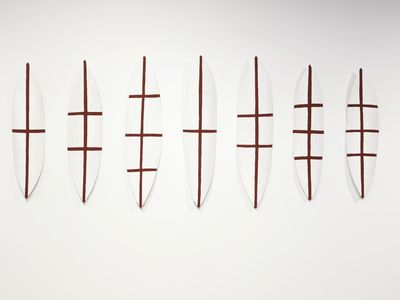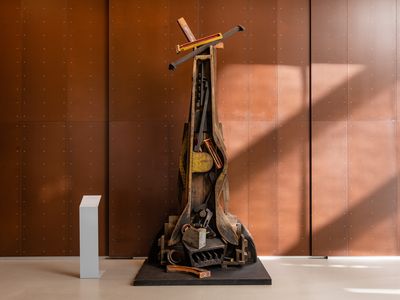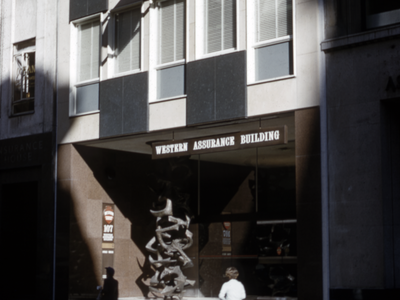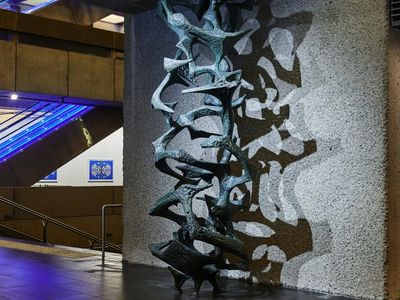Tony McGillick
Juxjacent
1969
synthetic polymer paint on canvas
177 x 222 cm
On display in the UTS FEIT Building, central stairwell, Level 7 [CB11.07]
Tony McGillick (1941-1992) was an influential figure in Australian art, both as a colour field painter and as one of the founders of the pivotal Central Street Gallery in Sydney. Established in 1966, the Central Street painters took on the conceptual and physical limits of painting through a pared-back, impersonal, and almost sculptural approach. Influenced by American hard edge abstraction, McGillick and his associates were looking to introduce internationalism as an antidote to the parochialism of earlier attempts to establish an Australian national style.
‘The Field’ exhibition, which marked the opening of the new National Gallery of Victoria in 1968 then moved to Sydney the following year, was important in exposing McGillick and this style of painting to a wider audience.
Juxjacent is one of a series created by McGillick from irregularly shaped canvas modules, that were presented in different colours and configurations across the series. It is comprised of four modules in contrasting green and purple, that have been offset to create a dynamic faultline through the centre of the work.
McGillick’s experimentations with the limits of painting later went further, when in the 1970s he did away with the frame altogether and exhibited unstretched and draped canvases.
This significant work is a part of a group of paintings purchased in 1970 for the newly built Balmain Teachers College in Lindfield, later the Kuringgai College of Advanced Education, then UTS.
The Central Street Gallery (1966-1970) was only short-lived, but the impact of their experiments with abstraction and internationalism still resonate today in the work of younger Australian artists and designers.

/https://uts-art-prod.s3.amazonaws.com/media/dd/images/00c7ff730a073ca9a6dd6aa34a23f2bb.jpg)

/https://uts-art-prod.s3.amazonaws.com/media/dd/images/02e4cd61f03a160c71ac5afa967a498c.jpg)



/https://uts-art-prod.s3.amazonaws.com/media/dd/images/df377b6c21304ede1f1e8f14abd59915.jpg)


